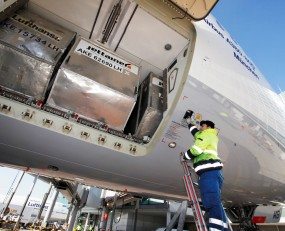
IATA has reported air cargo continued to expand strongly in February. Air cargo volumes increased, supported by the wider economic recovery. Industrywide cargo-tonne kilometres (CTKs) expanded by 9% compared with February 2019, a comparison used because this is the situation before the pandemic. In month-on-month terms, CTKs picked up by 1.5% and returned to levels last seen in 2018 before air cargo business started to be adversely impacted by the US-China trade war. So this has been a strong performance. The industry-wide CTK outcome hides differences across regions. While cargo volumes flown by carriers based in North America and Africa have been hovering well above the pre-crisis levels for many months now, Asia Pacific, Middle Eastern, and European airlines reached (or got close to) 2019 levels only recently. In contrast, CTKs of Latin American carriers continue to significantly lag behind the rest of the industry, showing little improvement since Q4 2020.
Increasing demand for air cargo services is being driven by the ‘V-shaped’ economic recovery. Also, air cargo has been gaining share in global goods trade over other modes of transport – a pattern typical during the recession recovery cycle.
Industry-wide cargo capacity continued to trend sideways in February due to the grounding of passenger aircraft. Cargo load factors remained elevated, at 57.5% for the industry. Since global demand grew while the capacity contracted, the industry-wide cargo load factor reached a record high outcome for any month of February in the history of IATA’s time series (57.5%). At the regional level, Asia Pacific carriers continued to report the highest load factors (69.2%), followed by European carriers (64.1%).
Industry-wide available cargo tonne-kilometres (ACTKs) were 14.9% lower compared to the same period in February 2019 – little improvement on 16.6% decline in January.
The recovery in air cargo capacity has slowed over the past three months. The spike of COVID-19 cases in some regions resulted in renewed lockdowns on which airlines reacted by the grounding of passenger aircraft. This in turn slowed recovery in belly cargo capacity. Although dedicated freighters’ capacity and utilization rates increased over the same period, it was not enough to keep the capacity on the previous recovery path. In month-on-month terms, ACTKs picked up by 3.6%, partly offsetting the fall from the previous month (-5.5%).
Source: IATA
The Ti Dashboard captures figures from IATA data in three monthly charts; International Air Freight Market CTK Year on Year Growth, International Air Freight Market Available CTK Year on Year Growth and International Cargo Load Factor (CLF) Year on Year Growth. They can be found on the Air Cargo page of the Ti Dashboard.
The Ti Dashboard is a collection of global and regional transportation, trade and economic data, which includes key metrics regarding the air freight and forwarding markets. The Ti Dashboard provides the facts you need in one easy to use source, saving you time, with insight and analysis from industry experts that enable you to make informed decisions. For more information, click here.